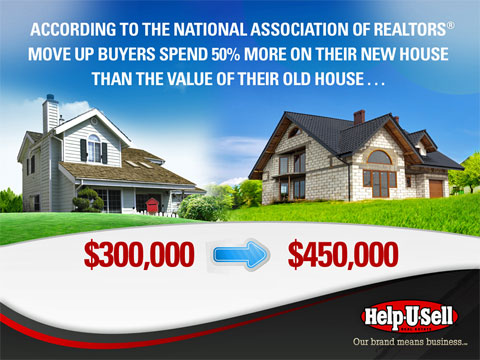We all know that carefully planned pay-per-click advertising works. It can effectively drive traffic to your website, where, if it is handled properly, it can turn into leads. We saw an example of that this morning on the Tech Time Tuesday Webinar, where Jack Bailey increased traffic to his office website by almost 1,000% over a four month period. ,due largely to his pay-per-click campaign on Google. Using Ad Words, he brought roughly 15,000 visitors to his website. One of his ads – the one offering a free market analysis – had a 31% click-thru rate! That’s crazy good! And, assuming some of the traffic is converted to leads, some of which actually buy or sell real estate, the cost can be very low. Really, Jack’s budget was $12 a day – a little less than $400 a month.
But, how do you do this? How do you proceed step-by-step to take advantage of this Internet Marketing Bonanza? Here’s how:
1. Decide what kind of lead you are seeking. Are you looking for Buyers or Sellers? What kind of Buyers? Buyers interested in Foreclosures? Buyers looking in a specific neighborhood? Buyers with little down payment money? Sellers with equity? Upside down sellers? Sellers in a specific geographic area? Step one is all about getting very specific about your target. The more specific you set your pay-per-click parameters, the more efficient your campaign will be. In short: you’ll attract fewer clicks from customers you don’t want (out of the area, just looking, unable to buy and so on).
2. Build a landing page on your office website where people who click your ad will ‘land.’ A good landing page should address exactly what the ad mentioned. If it was the offer of a free Market Analysis, that’s ALL that should be on the landing page: just the contact information capture form and a tiny bit of verbiage explaining what will happen when they sign up. Some experts say you should keep your branding, both personal and company, to a minimum on a good lead capture landing page. The idea is that people may sign up online for something they perceive to be of value if they don’t associate it with an ordinary Realtor or real estate company.
3. Decide where you are going to advertise. Google is the 800 pound gorilla here. If you choose this, your ads will appear when people who fit your demographic parameters search for the keywords and phrases around which you build your campaign. Don’t overlook Facebook. Their pay-per-click ads have been effective for many, and their targeting process is very specific. And don’t forget: not everybody searches with Google. Some use Bing, some use Yahoo. You may find more cost effective alternatives if you just look around.
4. Design your ad. Keep the verbiage to a minimum. Stick to exactly what you’re offering. Use Google AdWords to determine which real estate search terms are most common in your area and build your campaign around them. While Google pay-per-click is all words and links, Facebook allows you to include a photo or graphic in your ad. If you’re using a photo, note that. sometimes it’s the quirky photo that catches the eye. **TIP: Include your phone number in your pay-per-click ad. Some people will call rather than click, and you don’t pay if they don’t click!
5. Set-up and budget your campaign. You’ll set three ‘maximums’ when you initiate your campaign: your total budget (the maximum you want to spend for the entire campaign), your daily maximum, and the maximum you’re willing to pay per click. I mentioned Jack’s campaign: his total budget was right at $1,500. He was willing to spend up to $12 a day. I don’t know what he agreed to pay-per-click, but what usually happens is the vendor (Google or Facebook or Yahoo) will give you a range in which you should bid. Let’s assume it’s $1.10 – $1.53 per click. The higher you bid, the more frequently your ad will appear . . . until you hit one of your maximums. When I’ve done pay-per-click, I’ve set my bid on the high side of the middle of the range. By they way: some clicks will come in at less than your bid; it all depends on how competitive the environment around your key words is at that moment.
6. Track your results. Conceptually, this step is number six. But Chronologically? You probably ought to move this to first. BEFORE you do anything with any marketing, pay-per-click or otherwise, you must set up your system for tracking results. How will you capture and track the leads that come in via your Internet contact form? What about those leads that choose to pick up the phone and call? And how will you get your staff to take all of this tracking as seriously as you do? (I’ve always been a big fan of boiling in oil and/or burning at the stake for slackers, but the choice is yours).
7. Manage your campaign. Everyday, take a look at your results. How many leads did you create? What key words or phrases pulled the best? Which keywords could you pause or drop from the campaign? And so on.
Now it’s soapbox time. This is the moment when all of us need inventory. Listings are so low right now and the Listing Agent is in control. This is happening because increased buyer activity as begun to push prices slightly higher – something we haven’t’ seen in years. Homeowners are very curious right now about what their homes are worth. They’ve seen the uptick in values and are wondering if they’re still upside down. Now is the time to do a pay-per-click campaign aimed at these people. How about a pay-per-click ad that simply says: ‘Find Out What Your Home Is Worth Today’ . . . leading to the free market analysis page that’s already set up and is available on your office website.
So, let’s do it. Do steps 6, 1, and 3 – get it all organized – and then call Tony in Sarasota. He’ll be happy to help you finish the task. And if you want to run any marketing ideas by me, I’m energized and available.



